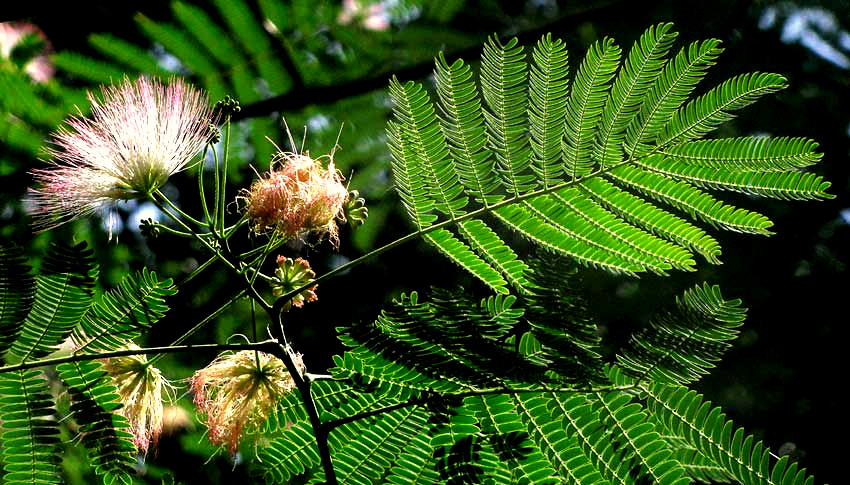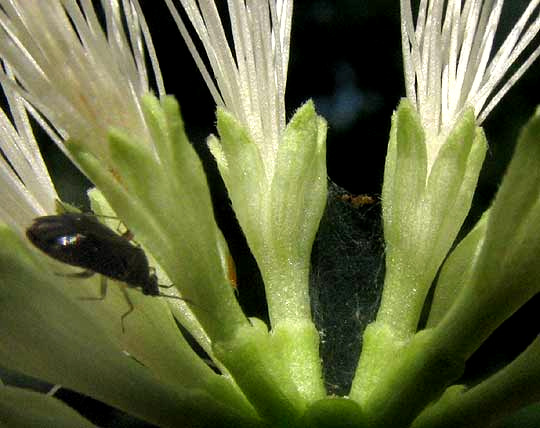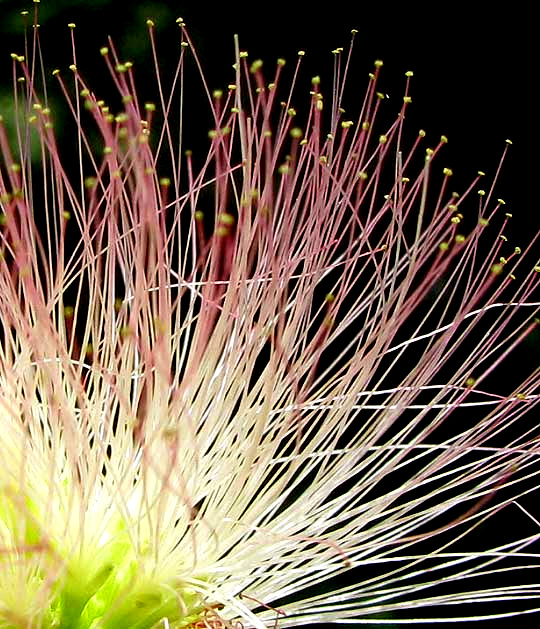Excerpts from Jim Conrad's
Naturalist Newsletter

from the May 20, 2012 Newsletter issued from the woods of the Loess Hill Region a few miles east of Natchez, Mississippi, USA
SILK TREE/ MIMOSA FLOWERING
Above you can see a common and beautiful tree flowering so robustly these days that butterflies from all around come flitting in it. On the Internet the tree's most commonly used English name seems to be Silk Tree, but that day back in the 1950s when my mother came from town with a switch of it to plant behind the coalhouse she said it was a Mimosa, so that's what I grew up calling it. It's ALBIZIA JULIBRISSIN, a member of the big Bean Family. Native from Iran east to China and Korea, it was first introduced into the US in 1745.
My mother thought that her Mimosa bore the prettiest flowers of any tree she'd ever seen, except for maybe the magnolia, but magnolias have a different kind of beauty. Mimosa flowers reminded her of pink powder-puffs, and were just as perfumy. Back before mall garden centers with every kind of exotic and gene-manipulated wonder became commonplace, Mimosas were deemed worthy of standing before and looking at, and saying something about the flowers' wondrous fragrance.
The Mimosa's powder-puff "flowers" are actually clusters of flowers. The fuzzy parts are inch-long stamens (2.5cm) with tiny, yellow anthers atop long, slender, pink filaments. You can see some actual flowers, each with numerous filaments arising from a pale green, five-lobed corolla below:

You can see how the pollen-yellow anthers tip the filaments below:

Despite all this perfumery and loveliness, in the Americas Mimosas are invasives likely to turn up growing wild in old fields and along stream banks and roadsides. Once established they're hard to remove because of their abundant, long-lived seeds and their ability to re-sprout vigorously.
Scientific studies have found Mimosa extracts to produce antidepressant-like effects in mice. In traditional Chinese medicine Mimosa has been used to "nourish the heart and calm the spirit." On the Internet a website offers "Albizia Extract" (Albizia being Mimosa's genus name) derived from stem bark that is "hand-harvested, carefully dried, and then custom extracted ... according to traditional Chinese methods." One ounce costs US $44.50.